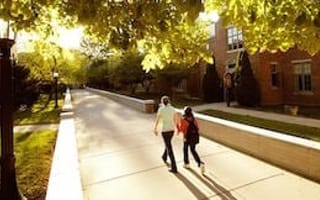
Locating Boston bus stops is a hard task for just about anyone, whether you’re a college student new to the city or a tourist in town for the weekend. Now, imagine trying to navigate public transportation while blind.
With current commercial GPS technology only navigating users to within 30 feet of their destination, blind or visually impaired people often experience buses literally passing them by.
A new app called BlindWays, developed by the Perkins School for the Blind, strives to eliminate the “30 feet of frustration” visually impaired people are accustomed to by using crowdsourced navigational clues that bring users within four or five feet of their bus stop.
Once a blind bus rider can touch the signpost and verify they are in the right spot to be seen by a bus driver, they gain more freedom to travel independently.
Luiza Aguiar, director of products at Perkins Solutions, a multi-faceted organization committed to improving the lives of people with blindness all around the world, said the app was inspired by her colleague Joann Becker, a Perkins assistive technology specialist who is blind. At a Perkins Solutions brainstorming session to identify gaps in assistive technology, she expressed her own frustration, saying busses often missed her.
“When she said she couldn’t find her bus stop, I had such a visceral reaction to that,” Aguiar said. “Think of all the times we run for the bus yelling, ‘Wait! Wait!’ This would make it a challenge for the visually impaired to access recreation, medical services, education, employment.”
Aguiar decided crowdsourcing would be the best way for fellow citizens to help blind commuters micronavigate their bus stops. Using BlindWays, people can submit clues describing permanent landmarks near a bus stop like a tree, a fire hydrant or a mailbox.
Since BlindWays’ success will largely depend on voluntarily contributed clues describing the some 8,000 bus stops in the MBTA network, Aguiar encouraged anyone with an iPhone to download the app and select clues that guide users to a particular stop.
Members of the blind community also provided advice and input, and Perkins enlisted a team of designers and software developers from Raizlabs to help build the app. BlindWays was then tested by many visually impaired technology users and experts.
Besides VoiceOver audio clues at each MBTA bus stop, the app also gives predicted bus arrival times and allows users to save their most-used routes.
Though BlindWays currently operates only in Boston, Aguiar said they hope to bring the app to other cities in the future.
“The foundational layer of architecture was built in a way so that the app is very expandable,” she said.
Photo via social media
Know a company worth profiling? Send us a message here and follow us on Twitter @BuiltInBOS



